The Lenovo ThinkPad P70 Review: Mobile Xeon Workstation
by Brett Howse on June 30, 2016 8:00 AM ESTDisplay
It’s taken a while, but display resolution on larger laptops has finally caught up with the smaller devices around. Lenovo offers both a 1920x1080 panel, as well as a UHD 3840x2160 IPS panel, which is what happens to be equipped in this review unit. I’ll once again lament the loss of the 16:10 panels here, especially on a workstation notebook, but at least we do have the option of 3840x2160, which works well at 200% scaling.
Lenovo also offers an interesting feature on the ThinkPad P70, which is the built-in X-Rite Pantone display calibrator. Along with the software, the process to activate this and calibrate the display is very simple. There’s a tray icon which lets you know when the calibrate, and you just open the software up and click to begin, at which point you close the laptop lid and let it run its course. The notebook will beep to let you know when it’s complete.
While the process is simple, it’s the results that matter, so let’s dig into specifics. For brightness and contrast readings, we use an X-Rite i1DisplayPro colorimeter, and for all other testing we use an X-Rite i1Pro2 spectrophotometer. On the software side, we use SpectraCal’s CalMAN 5 Business suite, with a custom workflow. As a reminder, when using DeltaE 2000 results, error levels over 5 are noticeable and therefore poor, between 5 and 3 is acceptable, and error levels under 3 are imperceptible in moving colors. For color critical work, error levels should be below 1. So the lower the score, the closer it is to the target color displayed.
On the charts, the Default level for the ThinkPad P70 will be with no ICC profile enabled, and it was tested out of the box before any calibration was done. The calibrated levels using the built-in sensor will be in Orange on the charts, and calibration with the i1Pro2 and CalMAN 5 will be in Blue.
Brightness and Contrast
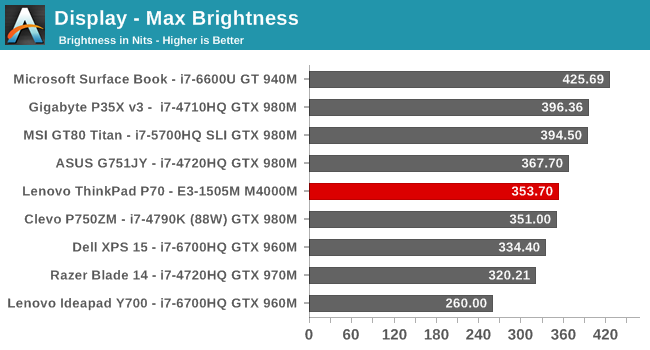
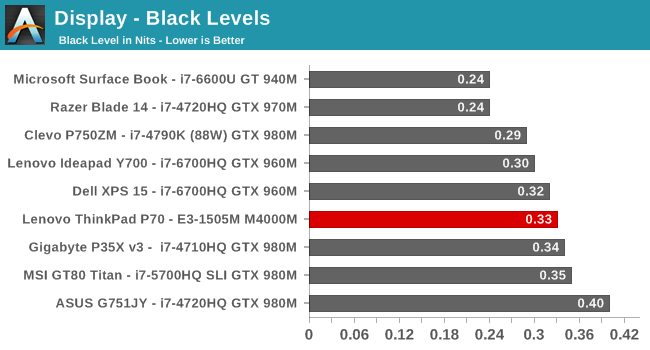
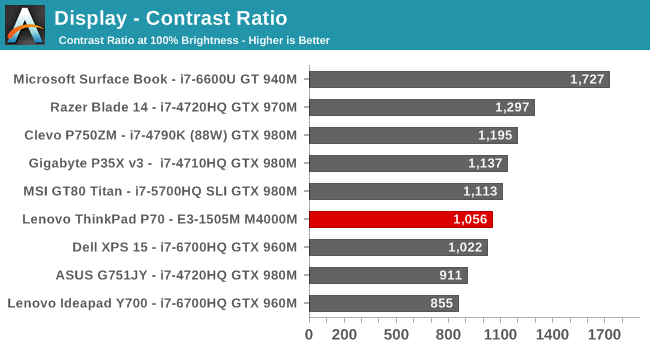
The ThinkPad P70 offers pretty decent brightness at 350 nits, and along with average black levels, it gives just over 1000:1 contrast. It’s pretty standard for an IPS display on a notebook computer, but you can see that the Surface Book absolutely trounces it in both maximum brightness and black levels, giving a much better contrast. The aligned LCD makes a big difference, and while it’s early days for UHD IPS on a 17.3-inch notebook, there’s still plenty of room for improvement here. Overall it’s average in this result, which isn’t a bad thing.
Grayscale and White Point
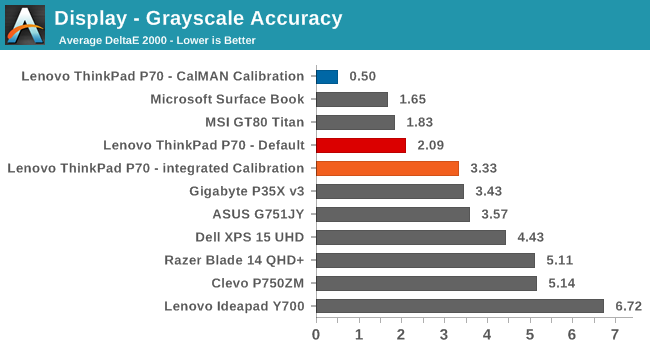
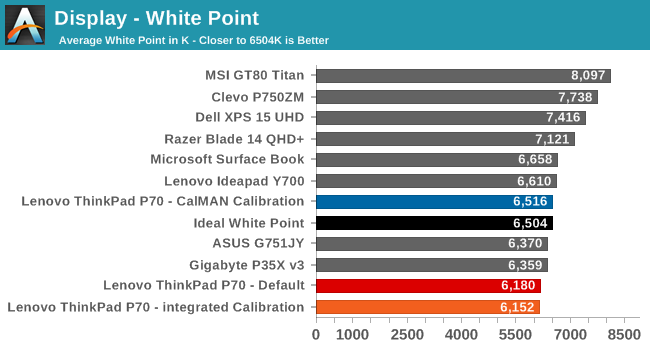
Here is where things start to get interesting. Out of the box, the dE2000 is actually very good at 2.09, and although some of the higher white levels get close to error levels of 5, nothing goes over 3. The gamma curve isn’t perfect but does average out at 2.2 as expected. The display is definitely warm, with higher reds than there should be, and the red shift is really the main issue with the grayscale performance. What’s interesting though is that when you run through the self-calibration, the dE2000 actually goes up, and there are several errors over dE2000 of 5, with 100% white coming in at almost 6. When you calibrate a notebook computer, you can only really calibrate the grayscale, so these results are extremely disappointing. The built-in calibration actually makes the display significantly worse.
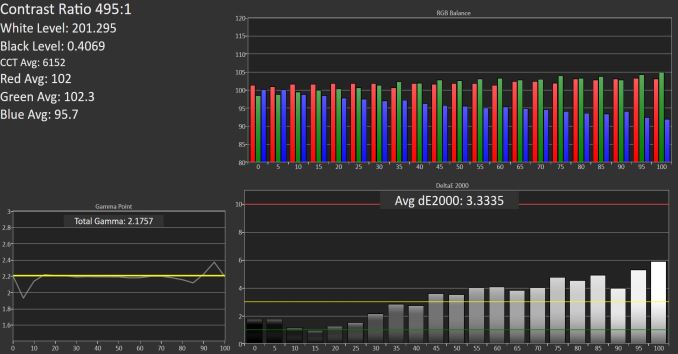 Grayscale after integrated calibration SpectraCal CalMAN 5
Grayscale after integrated calibration SpectraCal CalMAN 5
The proper calibration with the CalMAN software and i1Pro2 spectrophotometer brings the dE2000 to 0.5, which is what it was targeted at. The white point is now correct, and other than 100% black, none of the other levels even have an error over 1. This is the correct result after calibration.
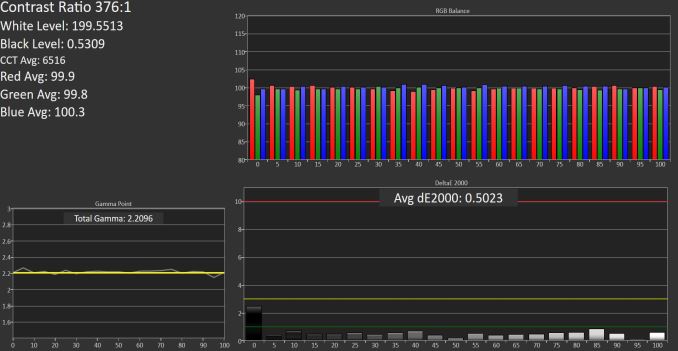 Grayscale after i1Pro2 plus CalMAN calibration SpectraCal CalMAN 5
Grayscale after i1Pro2 plus CalMAN calibration SpectraCal CalMAN 5
These results were a bit surprising, and it’s too bad that the implementation of the X-Rite meter is so poorly done. Having a quick and dirty way to calibrate the display would be an excellent addition to any laptop, however this implementation leaves a lot to be desired since it actually makes the display worse.
Saturation Accuracy
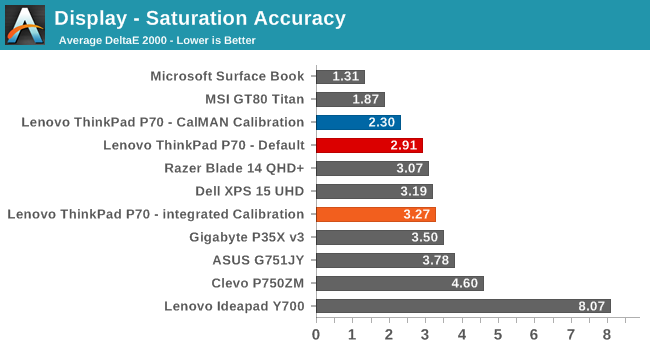
The trend continues with saturation, although it’s not as significant as the grayscale. Once again the default level is actually very good, coming in under 3, but the “calibrated” level makes it slightly worse. The display nicely hits the sRGB gamut though.
GMB Accuracy
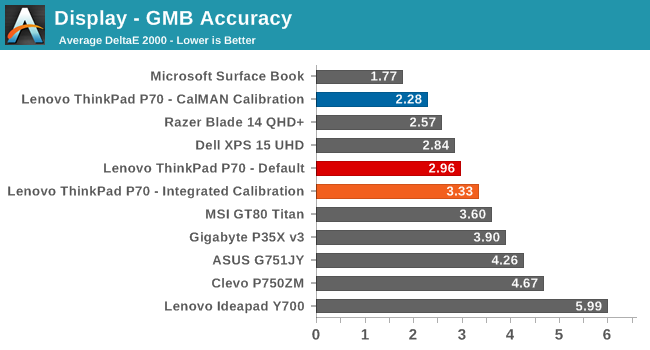
Gretag Macbeth is a comprehensive test of more than just the primary colors, and here out of the box the P70 is once again quite good, at 2.96. It’s not anywhere near the factory calibrated Surface Book, but it’s one of the better notebooks we’ve seen. The self-calibrated result falls off thanks to the grayscale errors it induces.
Display Conclusion
When I first saw the addition of a colorimeter built into the notebook, I was excited that someone was taking color accuracy seriously on a professional device such as this. Clearly, the results are not only poor, but actually make the display worse. If you were to buy this, you’d likely expect that the sensor would be correct, and the prompts to calibrate the display would make a difference. That’s not the case though, and you’d be better off disabling the software so that it doesn’t hound you.
I love the idea of a built-in sensor, but not one that harms the image quality.


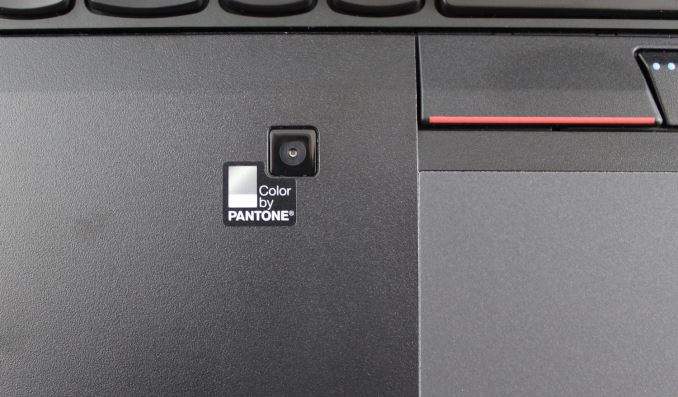
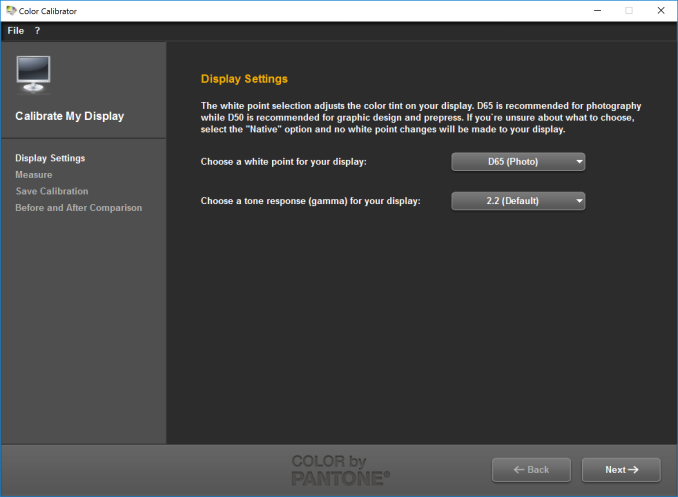
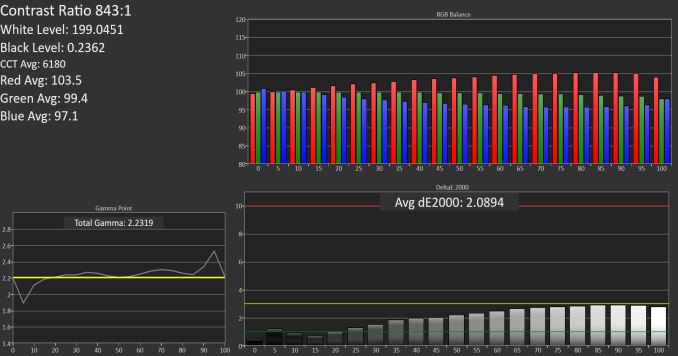
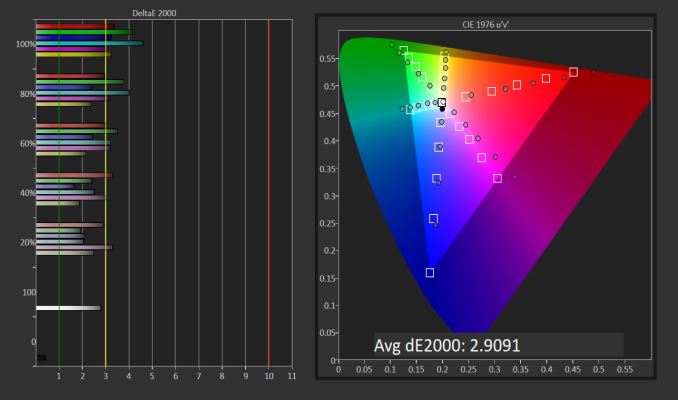
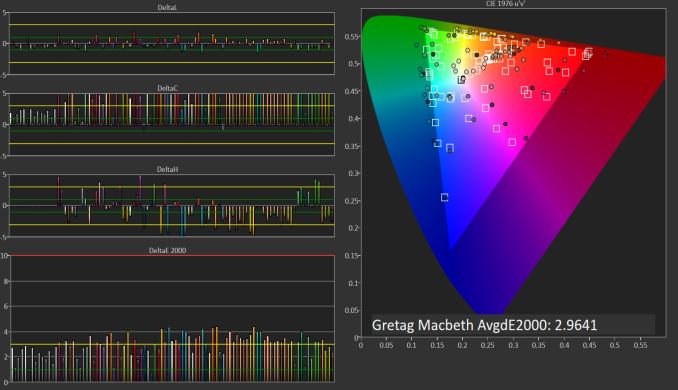









30 Comments
View All Comments
rxzlmn - Thursday, June 30, 2016 - link
That's a really strange outcome with the calibration sensor. Did you review other Lenovo models with a similar sensor before (such as the W540)? Did you contact Lenovo about these results, if yes, did they comment?krumme - Thursday, June 30, 2016 - link
I flat out dont understand what is happening. Why is there a calibration sensor? - ofcource thats going nowhere and a stock calibration must always be better than what this can do? is it to adapt the display then to surroundings?Secondly. On my thinkpad t460 1080 ips the problem is not so much calibration that seems okey out of the box but far to small a spectrum. Its far to limited. IMO hunting that last accuracy is nonsense. Sold my x-rite a year ago. Most screens today come good enough calibrated, the problem is in spectrum and contrast.
osxandwindows - Thursday, June 30, 2016 - link
I will install VMware ESXi on this and then run OS X on it.BillyONeal - Thursday, June 30, 2016 - link
1. That would not be legal.... 2. ESXi doesn't have a console; manageable only remotely. No reason for it to be a laptop at that point.adamto - Friday, July 1, 2016 - link
I did similar and it run very smooth. A free Mac with 32G dual channel memory!http://screencast.com/t/hZCm8YLMF1l9
fanofanand - Thursday, June 30, 2016 - link
This article appears to contain malware, moatads kept trying to download onto my machine. This isn't the first time either. Ryan please tell me you are not selling your readership out by authorizing tracking software for 3rd parties to be downloaded.bill.rookard - Thursday, June 30, 2016 - link
Hmmm... didn't get anything pulling up for any DbD (drive by downloads) but I am running Ad-Block...extide - Thursday, June 30, 2016 - link
Never had that problem here and I do not block ad's on this site. Perhaps your machine is compromised?skifiddle - Thursday, June 30, 2016 - link
I've got it too, along with profile.json. Time for the penicillin.wolfemane - Thursday, June 30, 2016 - link
Yeah I can't even view this site anymore on movile. I load an article and a full screen ad comes up. Browser Insta close. If its not full page ads it's the unbearable promoted stories bull crap at the end of the article. Slows the hell out of my browser. Anantech is getting to the point it's unreadable on mobile devices.